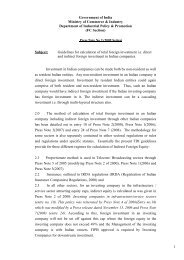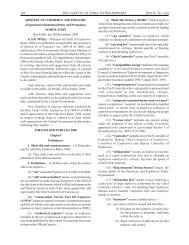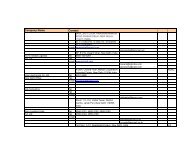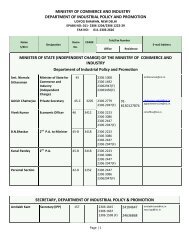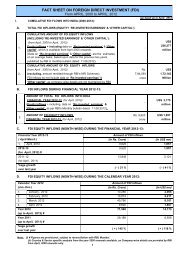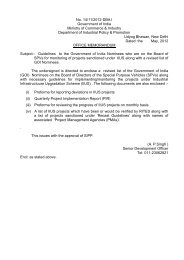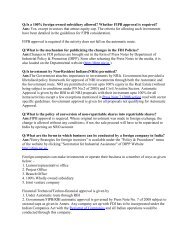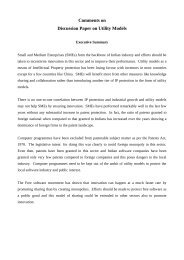GAS CYLINDERS RULES, 19811 - Department Of Industrial Policy ...
GAS CYLINDERS RULES, 19811 - Department Of Industrial Policy ...
GAS CYLINDERS RULES, 19811 - Department Of Industrial Policy ...
You also want an ePaper? Increase the reach of your titles
YUMPU automatically turns print PDFs into web optimized ePapers that Google loves.
SCHEDULE IV<br />
[See rule 35]<br />
A. FACILITIES REQUIRED FOR CYLINDER TESTING STATIONS<br />
1. Management:<br />
1.1 General Requirements. —Personnel, equipments, inspection procedures, recording and<br />
organisation shall be adequate and the test station will be operated with safe operating<br />
conditions. The procedures and testing shall ensure that cylinders, which fail to meet the<br />
requirements and intent of these rules, are not returned into normal service. All personnel<br />
shall fully recognise their individual responsibilities and that the minimum inspectional<br />
requirement shall not be lowered for any reason whatsoever.<br />
Note:-- The area of responsibility shall be divided into three separate function as<br />
indicated below. The numbers of personnel employed shall, however, be related to the<br />
quantum of work.<br />
1.2 Manager.—The manager responsible for the working of the test station shall be properly<br />
qualified; his qualifications shall include training on the dangers associated with gas<br />
cylinders, purpose of inspection, test methods, equipment, test requirements, and<br />
recording of test results, and he shall have appropriate technical qualification in<br />
Mechanical or Chemical Engineering. He shall also be conversant with the Codes,<br />
Specifications and /or Regulations applying to the cylinders for which the test station is<br />
approved.<br />
1.3 Supervisor.—The Supervisor shall possess the following qualifications, namely—<br />
(i) have at least two years’ experience in the examination of gas cylinder;<br />
(ii)<br />
(iii)<br />
be at least 21 years of age;<br />
be conversant with these rules, Codes, Specifications and/or Regulations<br />
applying to the cylinders for which the test station is approved.<br />
1.4 Operator.—Personnel conducting inspections and tests shall have qualifications and<br />
experience suitable for the work on which they are engaged. They shall be trained to<br />
understand the dangers associated with gas cylinders and the purpose and method of<br />
inspection.<br />
2. Equipment:<br />
2.1 Type of equipment. -- The test station shall have adequate equipment to carry out<br />
inspection and testing of cylinders as required under these rules. It shall contain—<br />
(i) One set of these rules, Codes, Specifications and/or Regulations applying to the<br />
cylinders, which the test station is authorised to test. All these rules, Codes,<br />
Specifications and/or Regulations shall be maintained with all current<br />
amendments.<br />
(ii) Hydrostatic test apparatus comprising pressurizing equipment, pressure gauge<br />
and volumetric measuring equipment in accordance with IS:5844-Hydrostatic<br />
stretch testing of compressed gas cylinders. The apparatus shall be equipped<br />
with at least two 15cm diameter (minimum) working pressure gauges.<br />
(iii) Non-destructive testing facilities like ultrasonic flaw detection, acoustic emission<br />
techniques, etc. for detection of stress corrosion cracks developed during the<br />
service.<br />
(iv) Dead-weight pressure gauge tester of appropriate pressure range or a master<br />
pressure gauge of 15cm minimum diameter covering the appropriate pressure<br />
range.<br />
(v) Boroscope, extra-low voltage lamps to permit adequate internal viewing of<br />
cylinders and other lamps necessary for close examination of external surfaces.<br />
(vi) Straightedges, templates, miscellaneous tool and gauges for measurement.<br />
(vii) Weighing equipment, where applicable.<br />
30



